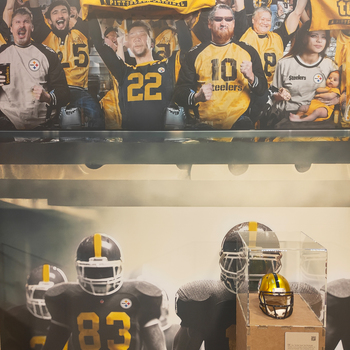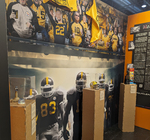
A Curious Tale of Queen Victoria, the Number 42, and a Dreadful Towel
 A towel is far more than just a simple piece of cloth for drying off. The history of the towel is fascinating and brimming with anecdotes. The practice of drying oneself with fabric goes way back in time, all the way to antiquity. In the Middle Ages, simple linen cloths were the norm for personal hygiene.
A towel is far more than just a simple piece of cloth for drying off. The history of the towel is fascinating and brimming with anecdotes. The practice of drying oneself with fabric goes way back in time, all the way to antiquity. In the Middle Ages, simple linen cloths were the norm for personal hygiene.Terry cloth, still popular worldwide today for its unique qualities, is manufactured through an intricate process involving multiple chain thread systems, ensuring a comfortable feel and high absorbency. The name "Terry" likely derives from the French word "tirer," meaning "to pull," in reference to how the fabric is made.
The European history of terry cloth production is well-documented, but the exact origin of terry cloth remains shrouded in mystery. The process likely originated in the Middle East or Turkey and was discovered by an Englishman named Henry Christy around 1850. Until a few years ago, terry cloth towels were referred to as "Turkish Towels" before the term was replaced by "Terry Towels."
The ingenious Englishman, Christy, who specialized in collecting textile handiwork, quickly recognized the potential that this soft fabric could develop in the domestic market and sent a handcrafted cloth to his brother, who was working at the Fairfield Works in Droylsden. He feared that advancing mass production might displace traditional manufacturing techniques. The original inventor of the loop-weaving technique used in terry cloth remains unclear, but a British worker named Samuel Holt, employed at Hillgate Mill, developed a method for mechanical terry cloth production.
The first satisfied customer was none other than Her Majesty Queen Victoria, who ordered six dozen Christy towels for the royal household after the 1851 World Exhibition. Thus, terry cloth towels initially found their way into the bathrooms of the nobility and later into those of the common people. Even today, the traditional dealer Christy in England is the go-to place for terry cloth products. Terry cloth quickly spread to Germany as well, with the first terry cloth loom set up on the German-Czech border in 1856.
In addition to everyday use, towels also have a remarkable history in the world of sports. The "Terrible Towel"of the Pittsburgh Steelers is an emblem and a tradition in American football. Fans wave it on game days, and it has raised millions for charity. This tradition began in 1975 and has accompanied the Steelers to numerous successes. The Terrible Towel is an iconic symbol for Steelers fans.
The peculiar "Towel Day" on the other hand, is a day of honor for Douglas Adams, the author of "The Hitchhiker's Guide to the Galaxy," and is celebrated worldwide on May 25th by carrying a towel with you, wherever you go. In "The Hitchhiker's Guide to the Galaxy," the towel is described as "about the most massively useful thing an interstellar hitchhiker can have." Therefore, Ford Prefect, one of the main characters, is never without a towel. The towel also serves as a constant reminder to keep your composure, no matter what obstacles life throws your way.






